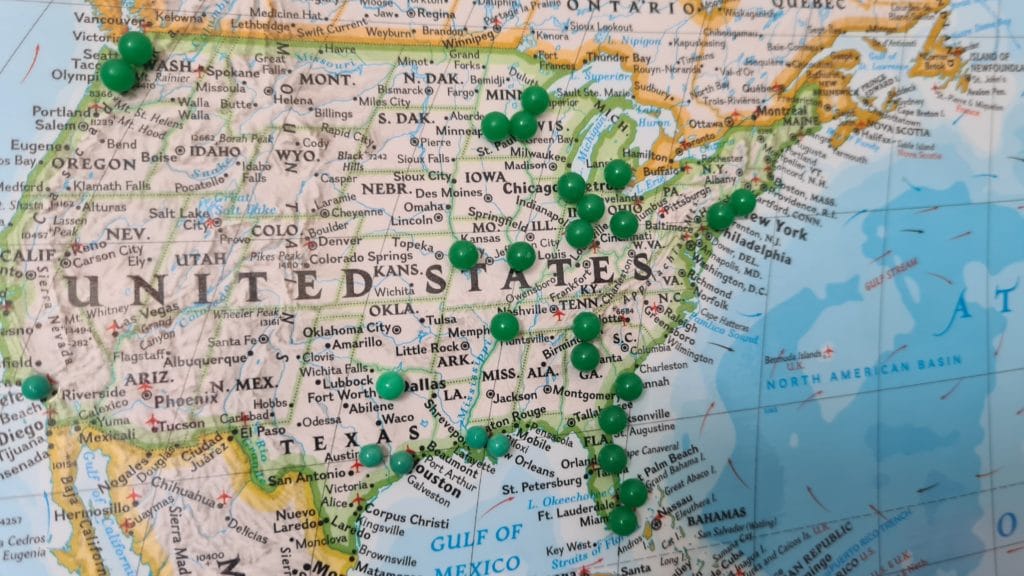Cannabis has been associated with a bad reputation since the 1960s and 1970s, coinciding with North America’s “war on drugs.” People are intrigued about how beneficial (or harmful) cannabis may be, particularly now that it will be allowed in many nations, thanks to a relatively recent knowledge of the plant’s advantages. Cannabis misconceptions aren’t new, but they’re becoming increasingly common. We’ve addressed some of the most frequent cannabis misconceptions to help you sort through all the information and misinformation.
1. “The endocannabinoid system originated in the human body as a result of humans’ long-term usage of cannabis.”
They are retracing the metabolic route of cannabinoids, which led to the endocannabinoid system. The endocannabinoid system gets its name from this, and this isn’t the case since these particles are designed to interact with cannabinoids such as THC and CBD. Cannabis and humans did not develop a symbiotic relationship! Similarly, “endogenous cannabinoids” are endogenous particles identified by examining how cannabinoids are digested by the body rather than cannabinoids produced by the body.
Some cannabinoids and these particles generated inside the human body have chemical structural similarities; the principal endocannabinoids are anandamide and AG2, with anandamide structured similarly to THC and AG2, showing some similarities with CBD.
2. Marijuana is non-addictive.
This is also incorrect. While marijuana is less addictive than more potent narcotics like cocaine or methamphetamines, it is nevertheless possible to get hooked. According to the Substance Abuse and Mental Health Services Administration (SAMHSA), around 10% of marijuana users will develop a dependence on the drug. When consumption begins before 18, the percentage jumps to about 17%. People who use cannabis many times a week have a higher risk of becoming addicted.
People addicted to cannabis may develop a need or a high tolerance for the substance, requiring more of it to create a high. As a consequence, you’ll experience the same withdrawal symptoms you’d get from other substances, such as:
- Mood swings
- Irritability
- Sleeping problems
- Headaches
- Loss of concentration
- Depressive feelings
- Appetite decreases
THC is the component of marijuana that has the most profound impact on the brain, and it is thought that THC is also responsible for addiction. As the quantity of THC in marijuana has risen three-fold in the previous 25 years, health experts are becoming more concerned about the safety of illicit marijuana and its potential to create addiction.
3. Medical Marijuana should be used as an alternative by pregnant or breastfeeding mothers.
Many pregnant and nursing women are naturally concerned about the medication’s impact on the baby. The quest for alternatives is one element contributing to the idea that marijuana is a safe choice.
Some cannabis chemicals, such as THC, may, nevertheless, negatively impact a baby’s growth and development. It can pass the placenta, implying the infant will consume the medicine.
THC and other cannabis chemicals have been found in breast milk. That implies the medicine will be administered to the baby even if you stop taking it. The following are some of the negative impacts marijuana may have on a baby:
- Birth weight that is too low
- Reduce the duration of the baby’s attention span.
- Hyperactivity disorders are more likely to occur.
- Inability to care for the child
Cannabis harms a baby’s brain development. According to specific results, children who have been exposed to marijuana at a young age have difficulty doing visual tasks. At one year old, there may be a delay in motor development.
4. Can you get overdosed on medical marijuana and still be safe?
The simple answer is no; there is no such thing as a cannabis overdose. A few calculations have been done to see how much cannabis you’d have to ingest to overdose or die. The numbers are ridiculous—especially when you consider how rapidly you’d have to consume it. There’s a fair possibility you’ve drunk too much if you’ve felt weak, out of it, more nervous, or overly high—but the risk of overdose is so remote that it’s nearly impossible. Users sometimes refer to these symptoms as “greening out,” which denotes a condition in which a person feels unwell after smoking or swallowing too much cannabis. Going pale or turning green, sweating, feeling dizzy, and nauseated are all common symptoms.
5. Medical marijuana has a high amount of chemicals and additives.
The phrase “medical marijuana” refers to the use of the whole, unprocessed marijuana plant and its extracts to cure a broad range of illnesses.
Cannabis is a species obtained from the hemp plant in its purest form. It includes a wide range of cannabinoids and phytochemicals that can cure a wide range of diseases and clinical situations. Medical marijuana is free of the chemicals and additives in opioids and synthetic medications, making it a considerably safer option for many patients. According to Harvard Medical School studies, medical cannabis may even aid those addicted to opioids.
6. Medical Marijuana has the potential to harm the brain.
Cannabis may impair brain function when consumed drunk, according to a study. Marijuana has hurt motor abilities, attention span, and short-term memory.
However, unlike other substances like alcohol, there is no indication that it can destroy brain cells. In the long run, the adverse effects on the brain are modest compared to non-users of cannabis. Cannabis myths may have emerged due to its impact on those who have bipolar disorder and psychosis. It makes people more vulnerable to mental illnesses if they have an underlying mental health issue. Medical marijuana, on the other hand, provides effective treatment for mental illnesses like anxiety and sadness. According to a 2018 poll, 58 percent of respondents reported a considerable decrease in worry and tension.
More human investigations are ongoing, so researchers are still cautious. It’s also worth noting that responses to cannabis products vary depending on the strain.
7. A conventional dispensary may provide medicinal cannabis to anybody.
A medical marijuana card, often known as a “med card” or MMD, is required for purchasing and consuming medicinal cannabis. A medical marijuana card permits a patient to obtain medical marijuana to treat their illness legally. It is granted by the state and needs a written recommendation from a licensed physician to qualify. In addition, the patient must fulfill the state’s standards. Only a medically authorized retailer or dispensary may sell medicinal marijuana. Some dispensaries in places where cannabis is
allowed for recreational and medicinal purposes are classified as dual-licensed businesses, allowing them to sell both adult-use and medical cannabis. However, only people with a legitimate medical marijuana card can buy cannabis for medicinal purposes.
8. Medical Marijuana is a gateway substance.
This is also untrue. There is no conclusive evidence that marijuana usage is linked to the use of more potent drugs, especially by humans. The Gate Drug Theory is responsible for much of the mythology surrounding marijuana as a gateway drug. This idea proposed that individuals go through a series of phases, starting with socially acceptable and legal drug use and progressing to more unlawful, less socially acceptable drug use. The issue is that only a tiny percentage of persons proceed through these stages to heavier substances.
Some persons who begin smoking marijuana at a young age misuse alcohol or other substances later in life. However, it’s possible that the cause isn’t cannabis. Instead, the individual’s social milieu and life experiences may be placing them at risk for drug use. A hereditary tendency to drug addiction may also exist. Marijuana, cigarettes, and alcohol may be more readily available to them in the beginning.
Most specialists feel that the present study on the subject is inadequate and that further research is required.
9. Medical Marijuana is a carcinogen.
Several chemicals found in marijuana smoke are also found in tobacco smoke. Scientists are still unsure whether it is the cause of cancer, and several cannabis facts muddle the study on the cancer-marijuana connection. One issue is that many cannabis users also smoke cigarettes. As a result, determining which chemical caused cancer in a user might be challenging.
Furthermore, some data show that some chemicals may reduce inflammation and slow the spread of malignant cells. However, this makes determining whether pot or tobacco is to blame for cancer in long-term users more difficult.
Much research on the relationship between cannabis and cancer was conducted while marijuana was still illegal, and more human studies might help to understand the link. In the meanwhile, you can consider purchasing marijuana from a licensed dispensary.


